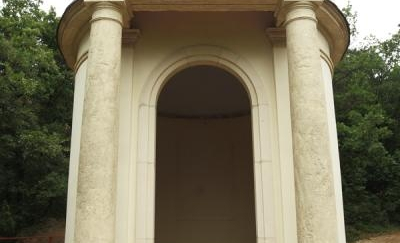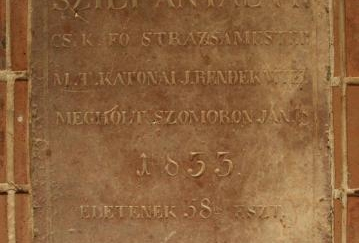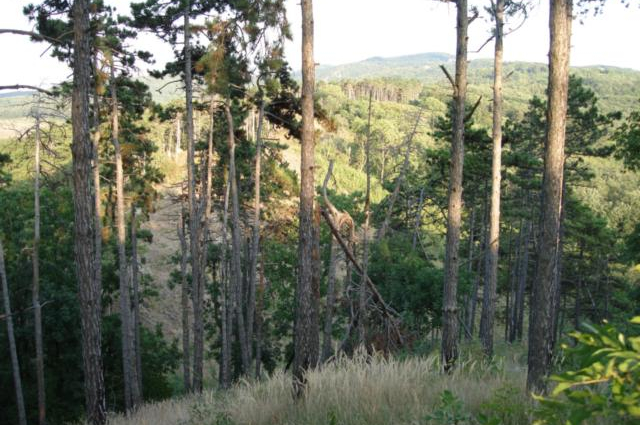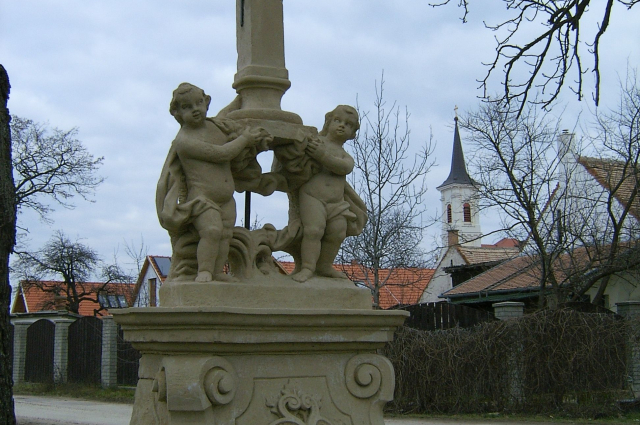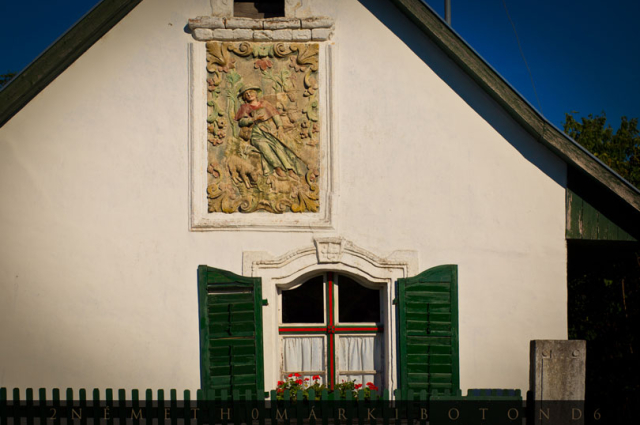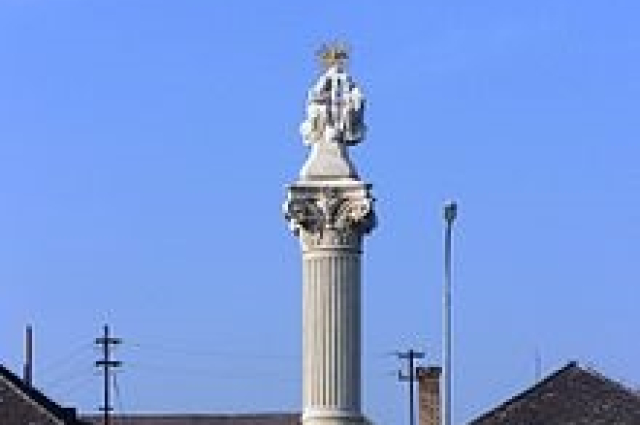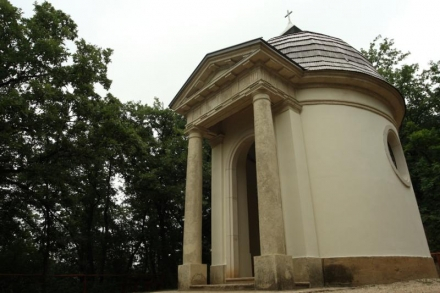
St. Wendelin Chapel
The St. Wendelin Chapel was erected by József Szily at the beginning of the 19th century.
We come across the first mention in the Canonical Visitation of the diocesan bishop’s visit in 1817. The chapel was damaged in 1944-45, despite restoration efforts the empire altar and the altar picture depicting the eponymous St. Wendelin could not be saved.
The special, circular chapel is located between Bia and Torbágy on the steep, forest mountainside near the vineyards, in the Iharos part of the forest. The Classicist facade is decorated by two wall pillars and two freestanding columns. The pillars underpin the bridge system (architrave) – furnished with decorative elements (triglyph) – and the guardian stone tympanum.
The column forecourt leads to a semicircular-closure high gate. Graceful, hidden, iron-grid oval windows can be seen on both sides. The dome covered with articulated eaves and curved-line tiles used to be decorated with a four-sided tinplate (a turret on the dome with windows for interior lighting).
The interior of the structure has a circular layout, dome-vault space. The gravestone produced by Antal Szily in 1833 can be seen in the middle of the floor and the Szily family tomb is under the terrace designed as a roundel in front of the chapel.
The chapel was partially restored in the 1950s and 60s. It is now owned by the Hungarian state and operated by Pilisi Parkerdő Rt. The chapel was renovated in cooperation with the Association for Ill-Fated Monuments and Pilisi Parkerdő Zrt. by Biatorbágy Local Government, the Government of Hungary, Pest County Local Government, the Office for Cultural Heritage Protection, and with the support of local citizens and companies, the Biatorbágy Foundation for Culture.
ST. WENDELIN CHAPEL
Biatorbágy, Iharos utca
GPS: 47.460563,18.843344
Similar results
Aynard’s Castle
2074 Perbál, Zajnát tetőLooking towards the Buda Hills one of the defining landscape elements – apart from Meszes-hegy (Limestone Hill) – is the double...
MoreStone cross
2089 Telki, Fő utca 33.The oldest monument in Telki, the Baroque stone cross, is located on the Main Street (Fő utca) near the Barn/ Village House...
MoreSt. Wendelin Folklore House With Relief
2072 Zsámbék, Bicskei utca 13.The once richest livestock farmer in the region built one of the oldest houses in Zsámbék, the St. Wendelin building with...
MoreThe Bia Holy Trinity Column
2051 Biatorbágy, Szentháromság térThe history of the Holy Trinity Column, located today in the middle of the roundabout, dates back to the Baroque era in the...
More